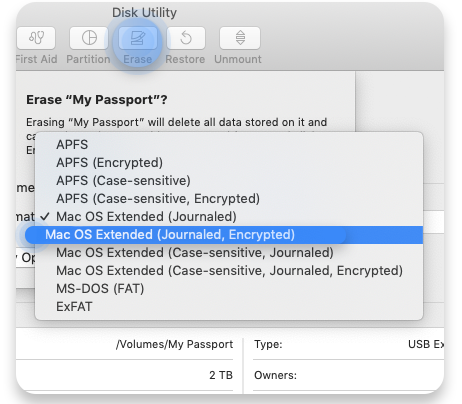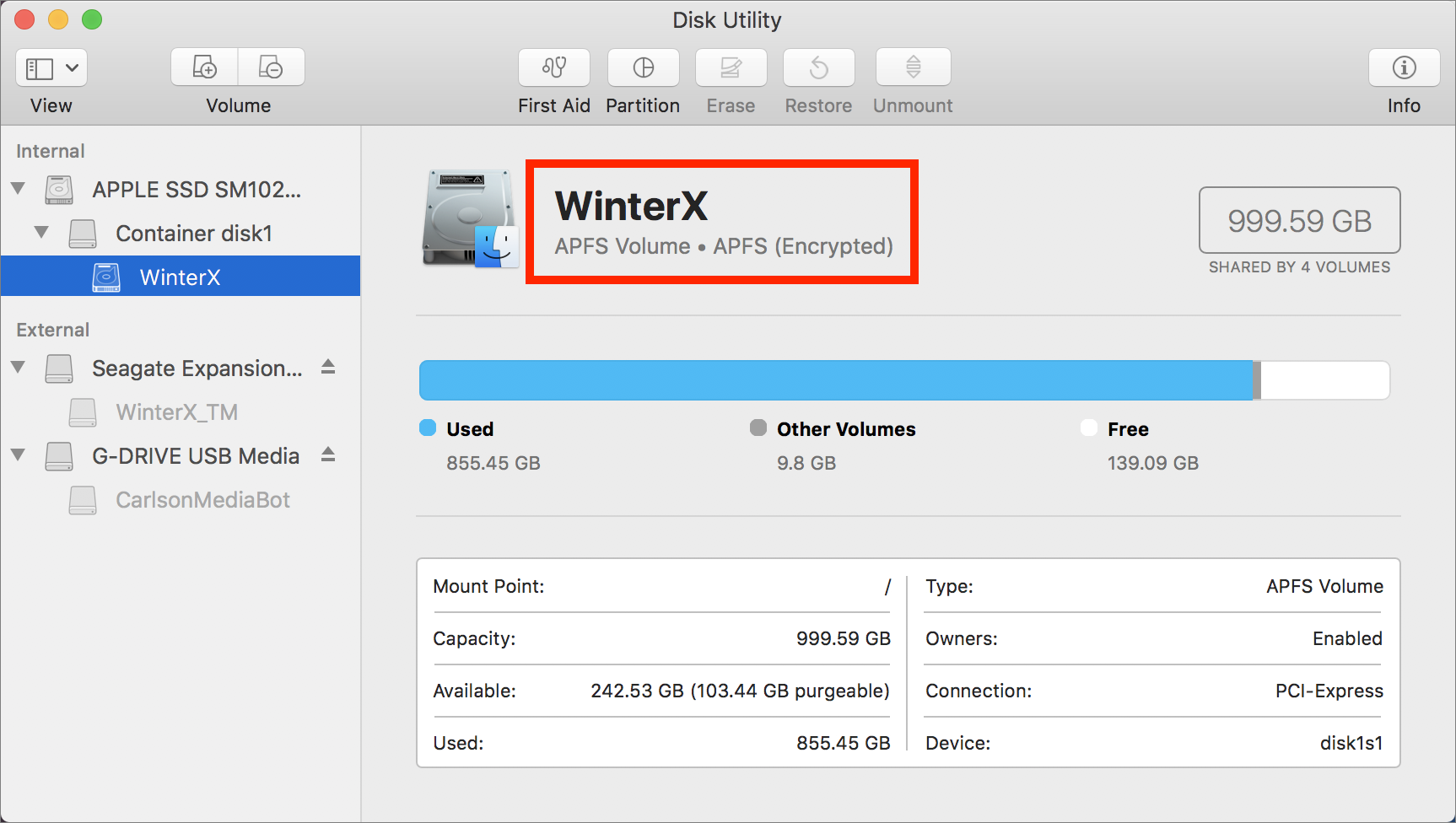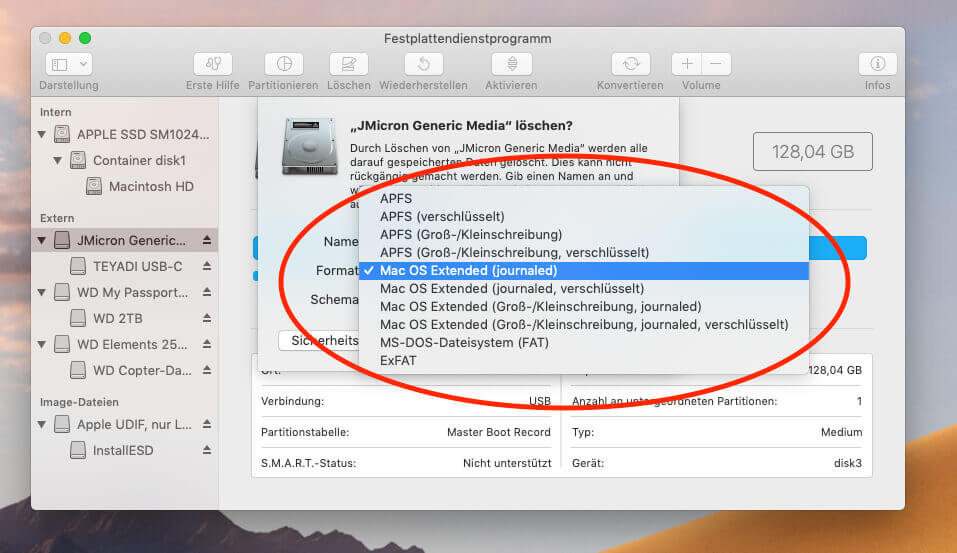

- #NO MAC OS EXTENDED JOURNALED ENCRYPTED HOW TO#
- #NO MAC OS EXTENDED JOURNALED ENCRYPTED FOR MAC#
- #NO MAC OS EXTENDED JOURNALED ENCRYPTED INSTALL#
- #NO MAC OS EXTENDED JOURNALED ENCRYPTED SOFTWARE#
- #NO MAC OS EXTENDED JOURNALED ENCRYPTED PASSWORD#
#NO MAC OS EXTENDED JOURNALED ENCRYPTED FOR MAC#
Though APFS is the default file system for Mac internal hard drives, it also can be used on external hard drives.īut notably, if you prepare to use the external hard drives under these scenarios, you shouldn't format it to APFS. For Apple Partition Map (APM), it is used on old PowerPC Mac devices. While Master Boot Record (MBR) is only compatible with Windows computers. GUID Partition Map can be used on Intel-based Macs, Apple M1 Macs, and even some latest Windows computers. Usually, only GUID Partition Map (APM) is available for APFS format. APFS Partition scheme: use Apple Partition, GUID, or MBR More specifically, old Mac machines with macOS 10.12 Sierra, OS X 10.11 El Capitan, OS X 10.10 Yosemite, or earlier releases cannot support APFS. You may have a question like this "Can older Macs read APFS?" Mac OS before macOS 10.13 High Sierra cannot read or write APFS formatted drives. All Mac devices with SSDs before 2016 are automatically converted to APFS when updating OS. But the official use of APFS was since macOS 10.13 High Sierra. When did Apple switch to APFS?Īpple experimental supports for APFS in macOS 10.12.4 Sierra. And the feature "encrypted" means that encryption is available for the volume.įeaturing snapshots, encryption, space sharing, clones, crash protection, etc., APFS brings the data storage and transfer performance to a new level. The feature "case-sensitive" means the file and folder names will differentiate the upper and lower cases. There are four types of APFS in Disk Utility, including APFS, APFS (Encrypted), APFS (Case-sensitive), APFS (Case-sensitive, encrypted). It has replaced Mac OS Extended to be the default file system for Mac startup disk from macOS High Sierra (10.13) in 2017. Source: From What is APFS?ĪPFS (Apple File System), like other file systems, is a process that controls how is data stored and retrieved on a storage device, like hard drives. Mac OS Extended: Is APFS better than macOS Journaled Here we've studied the features and defects of APFS and guide you when you should use APFS format. It is only bootable partitions that need to follow the above sequence to avoid trouble.Apple File System (APFS) is a self-designed file system of Apple Inc for Mac computers, Apple Watch, Apple TV, iPhone, and iPad.
#NO MAC OS EXTENDED JOURNALED ENCRYPTED SOFTWARE#
After you enable encryption, wait for the encryption process to finish before installing other software or making big changes.Perhaps that bug has been fixed now, but I don't know so I would not risk it. I have had issues with disks formatted with multiple partitions when using encryption on one or more of the partitions. I would also recommend to format it the disk as a single partition.

If you do it in this sequence then everything works.
#NO MAC OS EXTENDED JOURNALED ENCRYPTED INSTALL#
This can be done near the end of installing Sierra (it prompts you if you want encryption), or after the install is done.

Finally, turn on disk encryption (called FileVault).Install macOS Sierra on the fresh, unencrypted disk.Format the target disk "Mac OS Extended (Journaled)" - but not encrypted.I'm usually installing my Linux systems on fully encrypted disks, thus I am wondering whether this is also possible with macOS Sierra.
#NO MAC OS EXTENDED JOURNALED ENCRYPTED HOW TO#
Is this desired behaviour? How to install macOS on a encrypted, journaled file-system? I was not able to install macOS onto a fully encrypted disk. Now my only option is reboot and remove the encryption via disk utility. MacOS could not be installed on your computer.
#NO MAC OS EXTENDED JOURNALED ENCRYPTED PASSWORD#
I entered the password and the process continued until at some point it aborted with the following message: This told me it will check eligibility of my device and due to my encrypted disk it will ask for the password during installation.


 0 kommentar(er)
0 kommentar(er)
